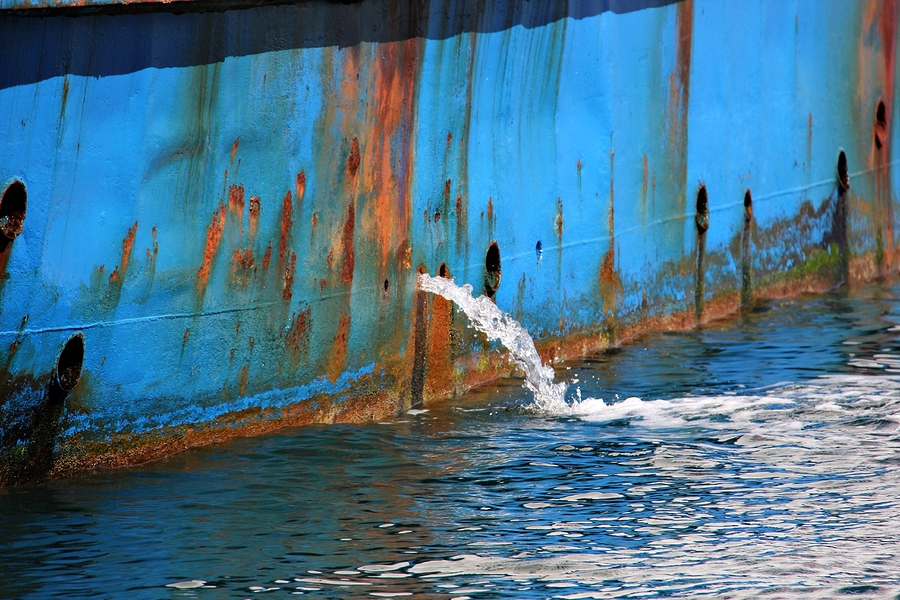ABS has identified several best practices for operation of ballast water treatment systems following a workshop held in Houston.
The feedback for best practices and operation was generated from twenty representatives joining from thirteen companies. All those participating had installed and are currently operating BWTS.
In brief, here are some of the key measures that should be taken to ensure best practice, avoid operational issues and difficulties, according to ABS.
Installation
- Identify installation issues early in the design phase.
- Consider extreme weather conditions when the BWTS is being installed. E.g. the enclosure and machinery space cooling is affected by high humidity and temperatures in tropical locations.
- Maintain two service engineers at the installation to save time and encourage crew to participate in installation to improve their understanding of the BWTS.
- Ensure the BW maintenance plan is validated during installation to avoid any inconsistency in the plan, which routinely occurs when the plan is developed after installation is completed.
- Keep close attention on the first BWTS installation and record every step to learn from and apply these lessons to future installations.
- Plan the engineering of the retrofit process and rehearse it before dry-docking.
Commissioning, Planning & Execution
- Ensure that both owner and shipyard have clear understanding of the commissioning, including roles and responsibilities and acceptance criteria.
- Obtain an actual demonstration of compliance specified in the contract for reassurance.
- Electrical and mechanical teams should be onsite during commissioning, service engineers ad shipboard crews should conduct maintenance walk throughs to verify adequate clearance and confirm appropriate spare parts are onboard.
- Due to system design limitations, owners are not aware of realistic commissioning challenges. The BWM plan should be validated by owners before commissioning.
- Owners should be vigilant during onsite activities, testing and commissioning phases to ensure full functionality at final delivery.
- Owners should ensure that the BWMS has been thoroughly tested before delivery.
- It is not recommended to have crew undergo training during testing as it can impact the result, adding uncontrollable variables to the testing.
Training
- A partnership with manufacturers to have simulators made available to mimic real BWTS operation may be useful.
- Place crew onboard different vessels to experience different BWTS.
- Owners and managers should also undergo training.
- Provide a proof of competency test to ensure trainees understand both the technical and operational aspects of BWTS.
- ABS report that 43% of running BWTS are not being sampled and tested. While not an international requirement, a sampling protocol should be included in the training.
Operations
- Inadequate shut-down sequences are a problem at the moment, causing improper cooling of lamps and leafing to BWTS going offline.
- Sequence is difficult to reprogram during operation so this should be designed and tested during installation and validated during commissioning.
- Backflush lines should be led directly overboard and the rate should be carefully monitored and adjusted when needed
- Care is needed to avoid damaging BWTS components, such as UV lamps.
- Owners should check and verify the data logging regularly and each system should store at least one month of data.
- Shelf life of consumables must be understood and appropriate restocking schedule should be developed.
Maintenance & Repair 
- Owners and manufacturers should consider performing an annual inspection of their BWMS.
- Different service engineers should check different components of the BWTS, update software, walk the shipboard crews through critical areas that need more attention and refresh the crews for potential troubleshooting aspects.
- Owners should validate the replacement components before and after installation.
Contingency Measures
- A clearly written contingency plan for all foreseeable maintenance and repair events is helpful.
- Shipboard crews may practice ballast water exchange as a fallback for ballast water treatment. The BWMP should anticipate this and include details on notifying and obtaining concurrence from concerned flag states and ports.
Fathom-News
editor@fathom-mi.com


































